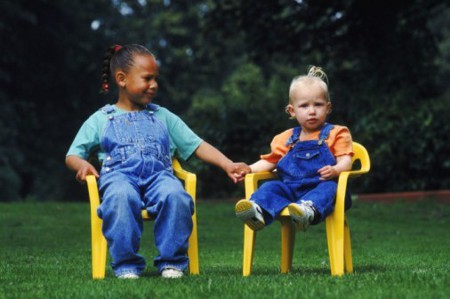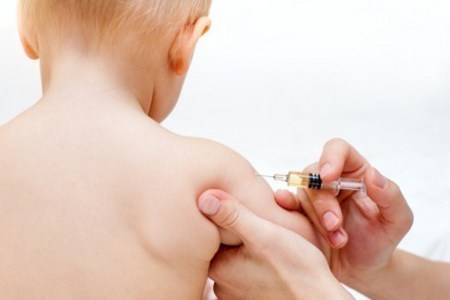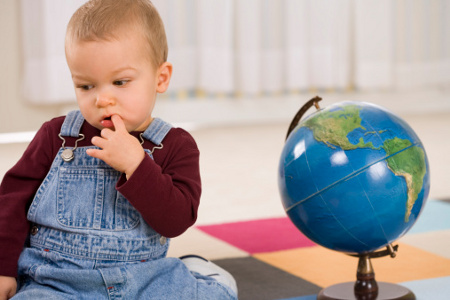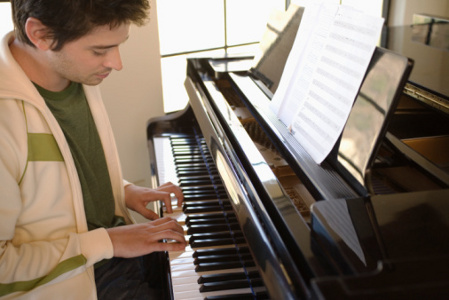Autism: Your Questions Answered
0 Comments
Who is at risk for autism?
Autism occurs in all ethnic and socioeconomic groups. Identical twins are much more likely than fraternal twins or siblings to have autism. Boys are four times more likely than girls to develop autism and receive the diagnosis three to four times more frequently. Photo: Getty Images

When do symptoms begin?
The signs of autism appear during the first 3 years of a child’s life. Most parents suspect that something is wrong by the time the child is 18 months old and seek professional help by the time the child is 2 years old. Some children with autism appear normal before ages 1 to 2, then suddenly regress and lose language or social skills they previously possessed. Photo: Getty Images

Do vaccines cause autism?
Many parents worry that the small amount of mercury, called thimerosal, which is a common preservative in multidose vaccines, causes autism. Studies have not shown this risk to be true. Until 1999, vaccines given to infants to protect them against diphtheria, tetanus, pertussis, Haemophilus influenzae type b (Hib), and Hepatitis B contained thimerosal as a preservative. Today, with the exception of some flu vaccines, none of the vaccines, used in the U.S. to protect preschool-aged children against 12 infectious diseases, contain thimerosal as a preservative. The MMR vaccine does not and never did contain thimerosal. Varicella (chickenpox), inactivated polio (IPV), and pneumococcal conjugate vaccines have also never contained thimerosal. The American Academy of Pediatrics and The Institute of Medicine agree that no vaccine or component of any vaccine is responsible for the number of children who are currently being diagnosed with autism. They conclude that the benefits of vaccines outweigh the risks. Photo: Getty Images

What are the early signs of autism?
Impaired social interaction is a distinguishing feature of autism. As early as infancy, a baby is unresponsive to people and focuses intently on one item to the exclusion of others for long periods of time. The first signs of autism can appear in children who seem to have been developing normally. When an engaging, babbling toddler suddenly becomes silent, withdrawn, self-abusive, or indifferent to social overtures, something is wrong. Photo: Getty Images

Are there are other indicators?
Autism spectrum disorders are characterized by a certain set of behaviors that can range from mild to severe. Very early indicators include, does not babble, point, or make meaningful gestures by 1 year of age, does not speak one word by 16 months, does not combine two words by 2 years, does not respond to name, loses language or social skills, poor eye contact, excessive lining up of toys or objects, and no smiling or social responsiveness. Later indicators include impaired ability to make friends with peers, impaired ability to initiate or sustain a conversation with others, absence or impairment of imaginative and social play, repetitive or unusual use of language, odd repetitive motions, attachment or preoccupation with certain objects or subjects, difficulty regulating emotions and inflexible adherence to routine. Photo: Getty Images

Does genetics have a role in autism?
In early 2008, UCLA scientists announced the identification of a new gene, CNTNAP2, linked to autism. CNTNAP2 is most active in developing brain structures that are involved with language and thought. Evidence for the genetic link came from DNA of families with autistic boys, not those with autistic girls. The scientists surmised that this may explain why autism occurs in boys more often than girls. Subsequent research found that mutation or variation of CNTNAP2, also called chromosome 7, translated to an inherited risk for autism. A spontaneous and rarer form of autism was associated with either missing or duplicate copies of about 25 genes in the chromosome 16 area. Photo: Getty Images

How many people carry this gene?
About one-third of all people carry the variant of the CNTNAP2 gene, which is now associated with a heightened risk for autism. Ashley Scott-Van Zeeland, Ph.D., conducted research at UCLA and found that the brain scans of children with CNTNAP2 variants showed the frontal lobe was over-connected to itself rather than having normal connection with the left side of the brain, where language is processed. Unlocking the role of CNTNAP2 in brain function could help in the development of new early interventions or treatments for autism. Photo: Getty Images

Are researchers looking at other causes?
While evidence currently points to genetic factors, researchers are giving attention to the role of abnormal brain development beginning in the infant’s first months. Prenatal exposure to the chemicals thalidomide and valproic acid has been linked with an increased risk for autism. This initiative targets research that seeks to understand and identify the potential role environmental factors play in triggering autism. Photo: Getty Images

What is the prognosis for an autistic child?
For many children, the symptoms of autism improve with treatment and age. Most health care professionals agree that early intervention improves the prognosis. Educational behavioral interventions can help children develop social and language skills. Children whose language skills regress before the age of 3 appear to have a higher than normal risk for developing epilepsy or seizure-like brain activity. Many children develop sensory problems. They can be highly attuned or painfully sensitive to certain sounds, textures, tastes and smells. During adolescence, some children with autism may become depressed or experience behavioral problems. A physician will prescribe medications to treat specific autism-related symptoms such as seizures, anxiety, depression or obsessive-compulsive behavior. Treatment may need modification as an autistic child transitions to adulthood. Usually continued services and support are necessary throughout their lives. Many are able to live independently or within a supportive environment and pursue careers especially in areas of personal interest such as computers, art and music. Photo: Getty Images
Add a CommentComments
There are no comments yet. Be the first one and get the conversation started!